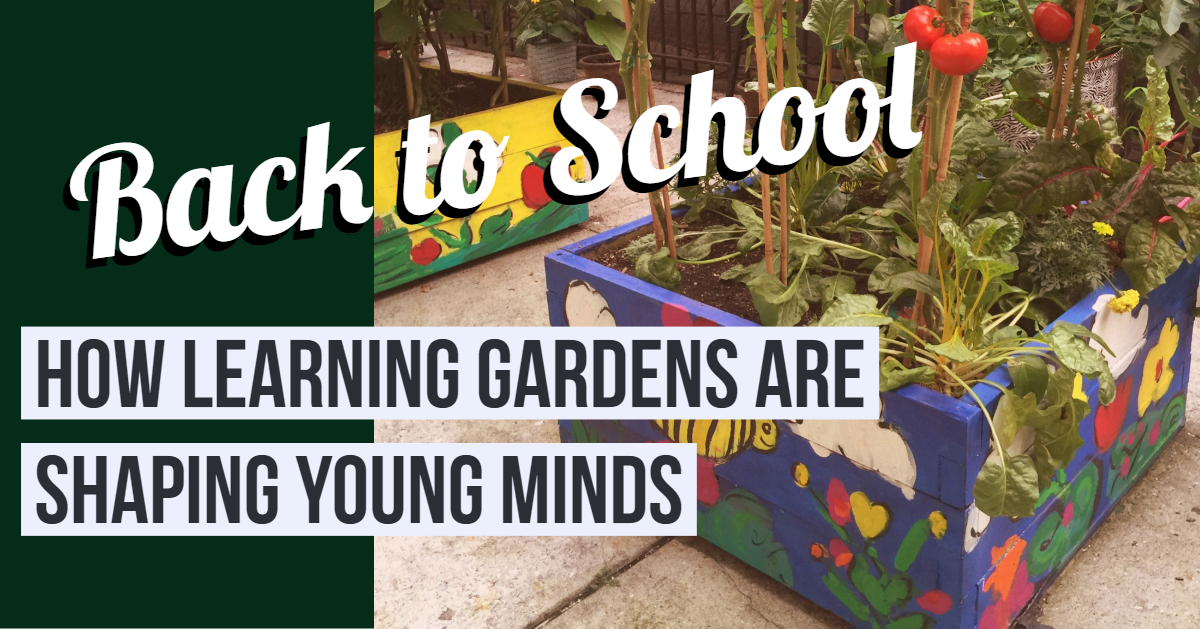Back To School
The Importance of Learning Gardening
by Sam Doll

What do you think of when you imagine a classroom? Do you think of rows of desks, educational posters, a whiteboard with a professionally dressed teacher at the front? There may be a few toys or tablets with games designed to teach kids their alphabet or basic math.
That traditional classroom is useful for certain things, like learning grammar and division, but it is really inadequate for teaching kids about the world they live in and interact with every day. This is especially true with food.
Most kids, especially those from low-income or urban areas have very little understanding of what food actually is or where it comes from. Kids learn through their senses, so when they aren’t given the opportunity to actually see and touch and understand how food comes from the earth to their plate, it is hard for them to have a deep understanding of the food system and it is harder for them to make healthy choices. Ketchup has no connection to a tomato and the tomato has no connection to the earth.
We know that good nutrition is linked to higher academic achievement. We also know that gardening has many positive outcomes for children, including better nutrition, social skills, and academic achievement.
That is why school learning gardens are such a powerful education tool. These outdoor classrooms can be installed either on school campuses or remotely and provide a unique, hands-on opportunity for kids to learn lessons in nutrition, science, and community while getting a tasty, healthy snack right from the garden!
One of the biggest organizations pushing for school learning gardens is Big Green. Started by Kimbal Musk, food entrepreneur and brother of Elon Musk. Big Green installs learning gardens at low-income schools across the country.
They provide dedicated garden instructors, so teachers aren’t being asked to do more than they already are and kids are getting information straight from the experts. Started in Boulder, Colorado (BBB Seed’s hometown), Big Green has built learning gardens at over 378 schools in seven states.
At BBB Seed, we are dedicated to educating people of all ages about the benefits of eating healthy, protecting our pollinators, and gardening with organic methods. To get educational materials sent straight to your email, make sure to sign up for our newsletter at the bottom of the ‘home’ page.


